The Mammut Comfort Down -5 (or -7 for women/shorter men) is a solid three-season sleeping bag that seems to strike the perfect balance between price, weight and performance. It’s also impressively sustainable.
Swiss brand Mammut completely overhauled its entire down and synthetic sleeping bags category a few years ago, introducing a new ‘Dream series’ that all adopted a distinctive centre zip design. The aim was to simplify and streamline the collection, making it easy to find the right bag for your needs.
All the bags combine comfort and practicality with different levels of performance, tweaking the balance to suit various users, from two-season bags for milder weather through to four-season winter warriors designed for serious sub-zero conditions.
Basically, as the bags get warmer and more technical, they also get slimmer and more tapered, reflecting the need for maximum thermal efficiency and superior warmth to weight.
Check out the women's version.
Pros
- Comfortable
- Practical centre zip design
- Sustainable build
Cons
- Not as thermally efficient as higher FP rivals
- Down is not moisture-resistant
| RRP: | £300 / $249.95 |
| Sizes | Men’s/large (for users from 180-195cm) and women’s/medium (for users up to 180cm) |
| Packed size: | 25x19cm (L), 22x19cm (M) |
| Weight: | 1.19kg / 2lb 10oz (men’s/L), 1.13kg / 2lb 8oz (women's/M) |
| Insulation: | 600g/21oz of 650FP 100% recycled grey duck down |
| Materials: | 100% recycled polyester ripstop with PFC-free DWR |
| Temperature rating: | Comfort 0°C | Limit -5°C (men’s/L), Comfort -1°C | Limit -7°C (women's/M) |
The Comfort bags are among the more recent additions to the range, and arguably the most versatile, too. Available with both down and synthetic fills and in a range of temperature ratings, they all share – as their name suggests – a fairly relaxed mummy profile built with comfort in mind.
It's impressively sustainable. Mammut uses 100% recycled 650FP down fill and recycled fabrics throughout. The brand also introduced a more efficient cutting pattern that reduces production waste by 15% compared to the industry average, leaving fewer unusable fabric scraps on the cutting room floor.
On test, we found this to be a very comfortable, practical and versatile bag, with great ventilation thanks to that long centre zip. On warmer nights, you can vent from the top or bottom or even open it right out like a backpacking quilt.
On colder nights, it’s easy to cinch in the hood, while a cosy neck baffle does a good job of locking in heat. It’s worth noting that the dimensions are pretty generous, though.
If you’re shorter than 183cm (6ft), you might find there’s a bit too much dead space inside, which could make the bag feel colder than the temperature ratings might indicate. If that’s you, maybe look at the -7 version, which is intended for users up to 180cm (5ft 11in).
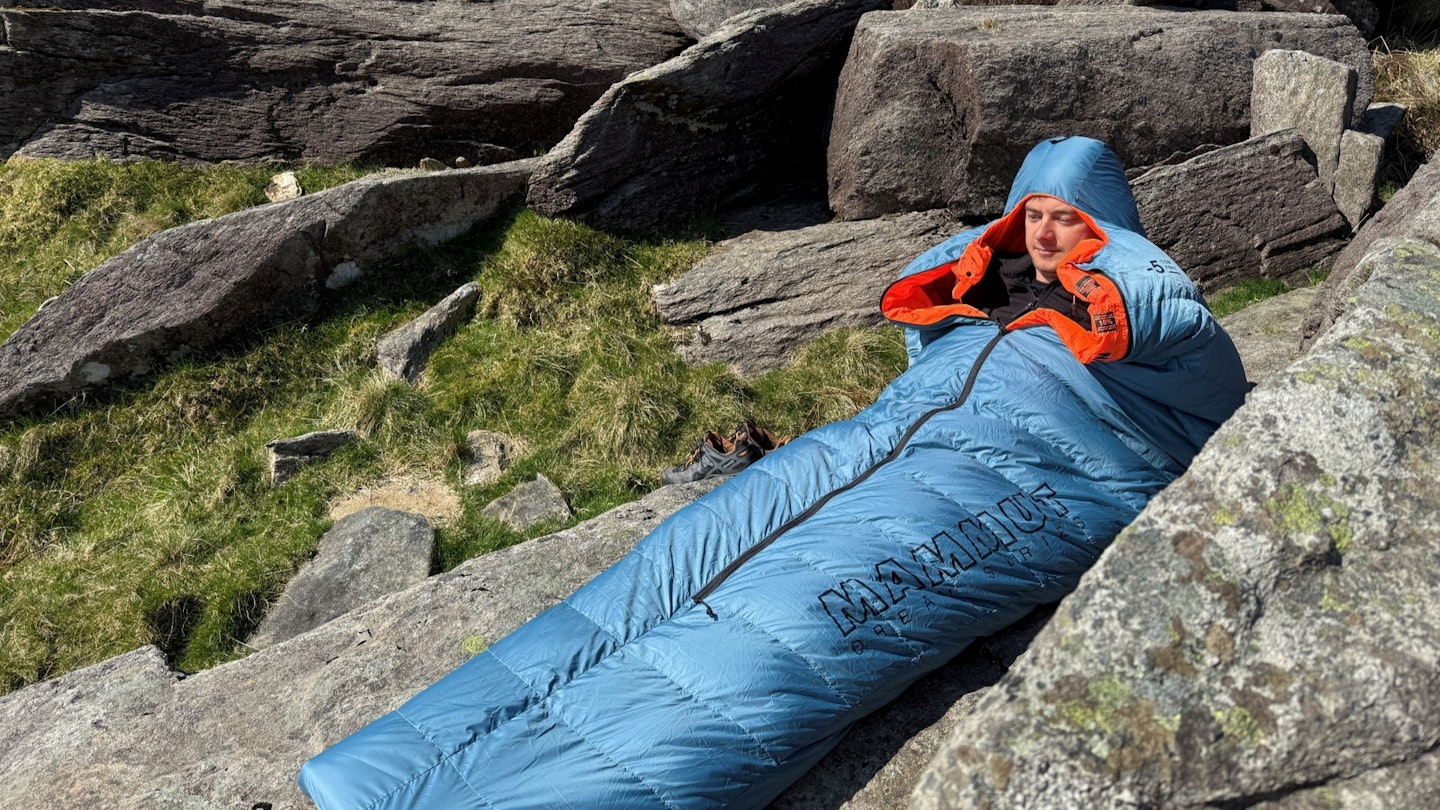
Despite its lower fill power, it performs well in terms of warmth to weight and packability compared to equivalent rivals like the Thermarest Boost 650 -6 or the Nemo Disco 15.
However, the fill lacks a hydrophobic treatment or responsible sourcing certification (two of the limitations of using recycled down, though the environmental upsides probably outweigh these negatives).
It lacks some of the features of Mammut’s more high-end bags like an internal pocket or noise-dampening hood lining, but the centre zip, dual drawcord hood and nifty ‘blanket mode’ offer great versatility.
Overall, it’s a solid, sustainable option for most campers, balancing comfort, functionality, and ethical design.
Temperature ratings
The Mammut Comfort bags come in several different variants, ranging from a synthetic bag with a -1°C temp rating all the way to a down bag with a -18°C limit.
The option we tested was the Comfort Down -5, which (as its name suggests) has an EN/ISO certified temperature rating of -5°C (lower limit). This is defined as "the temperature at which a standard man can sleep for eight hours in a curled-up position without waking and feeling cold".
Meanwhile, the bag’s comfort rating is 0°C (defined as "the temperature at which a standard woman can expect to sleep comfortably in a relaxed position").
However, it’s worth noting that there is also another version of this bag that is better suited to women, which sleeps a little warmer, with an ISO lower limit of -7°C and a comfort rating of -1°C. It has the same total fill weight as the men’s bag (600g of 650FP duck down) but in a shorter length that will fit users up to 180cm (5ft 9in) tall.
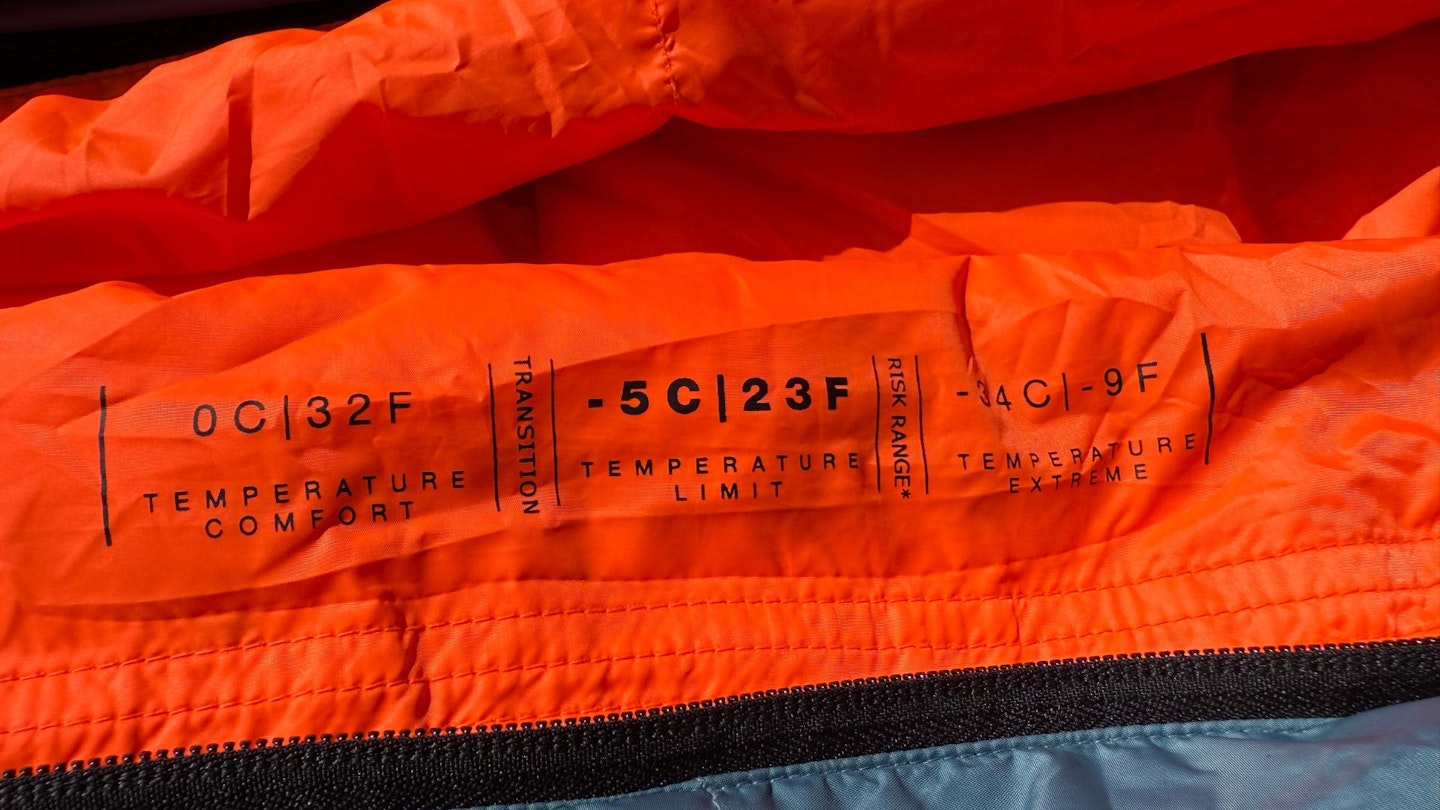
Mammut actually describes the two different variants in gender-neutral terms as being simply ‘medium’ for the shorter length and ‘large’ for the longer length.
So, if you’re shorter than 180cm, you’ll probably be better off opting for the medium size, since it’ll not only fit better, but is also a bit warmer, and lighter too. With an RRP of £300 ($249.95), they’re also the same price.
Regardless of which you go for, the Comfort Down -5 and -7 temperature ratings put them both squarely in three-season territory, broadly suitable for use from spring through to autumn. Unless you’re a particularly cold sleeper, you’ll likely be warm enough even if overnight temperatures dip below freezing.
Having said that, they’re not quite as warm as two other bags we included in our 2025 three-season sleeping bags group test: the superlight, high-performance Mountain Equipment Xenith III or the (more comparable) Nemo Disco 15 – though that one is considerably heavier and bulkier.
Insulation type, fill power and fill weight
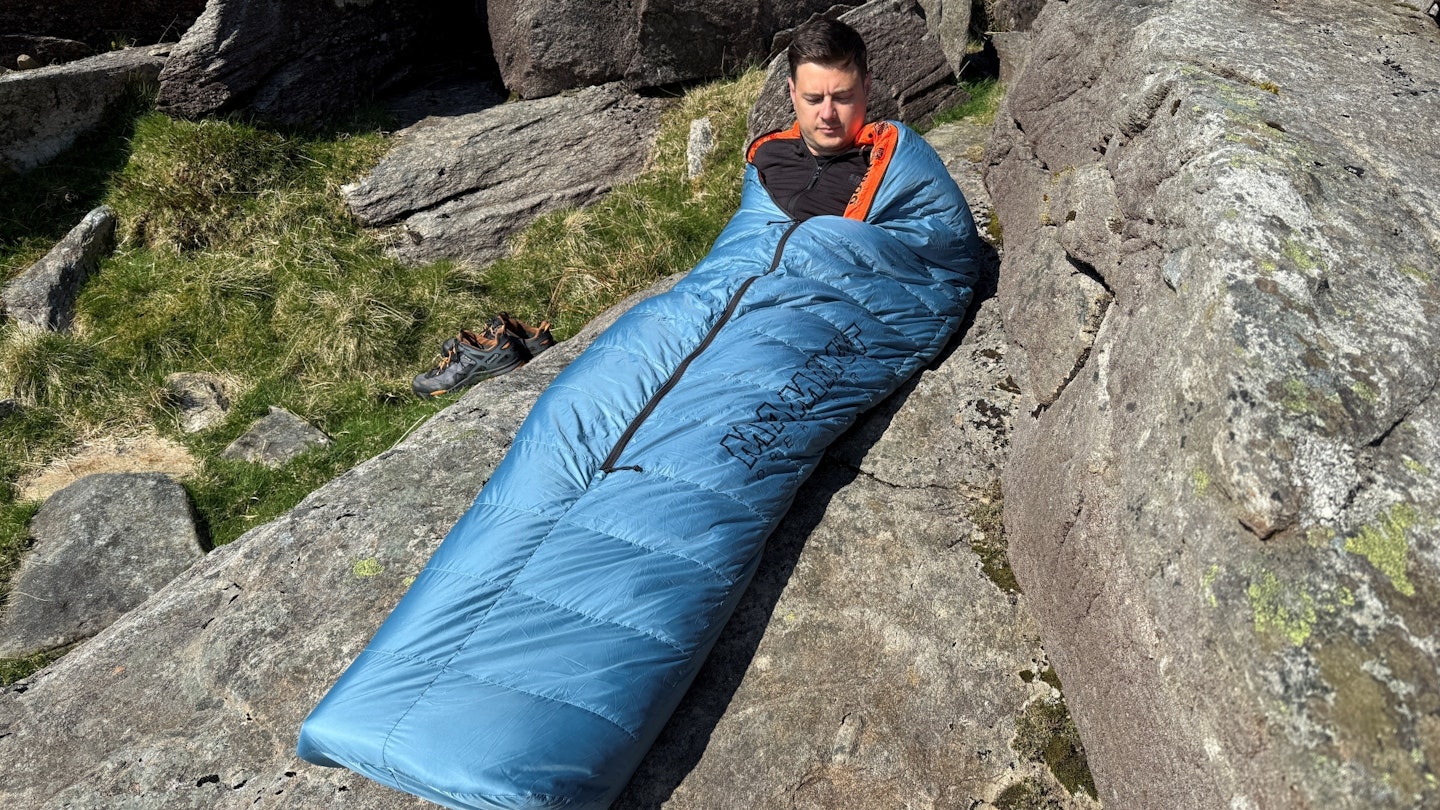
This bag is stuffed with 650 fill power grey duck down. That’s a slight downgrade compared to some other Mammut bags, which use 700FP down, but there’s good reason for this: the newer Comfort series all use down that is 100% recycled, which is a great move from a sustainability perspective.
When it comes to total fill weight, both the Comfort Down -5 and -7 are stuffed with 600g of down fill.
Unlike some bags, however, the fill has not been treated with a hydrophobic finish, which is one of the limitations of recycled down. Nor can recycled down be certified as responsibly sourced, since it’s impossible to track its origins.
On balance however, it seems preferable to use reclaimed down rather than using virgin natural down, even if you can’t be so sure of where or how it was originally sourced.
Pack size and weight
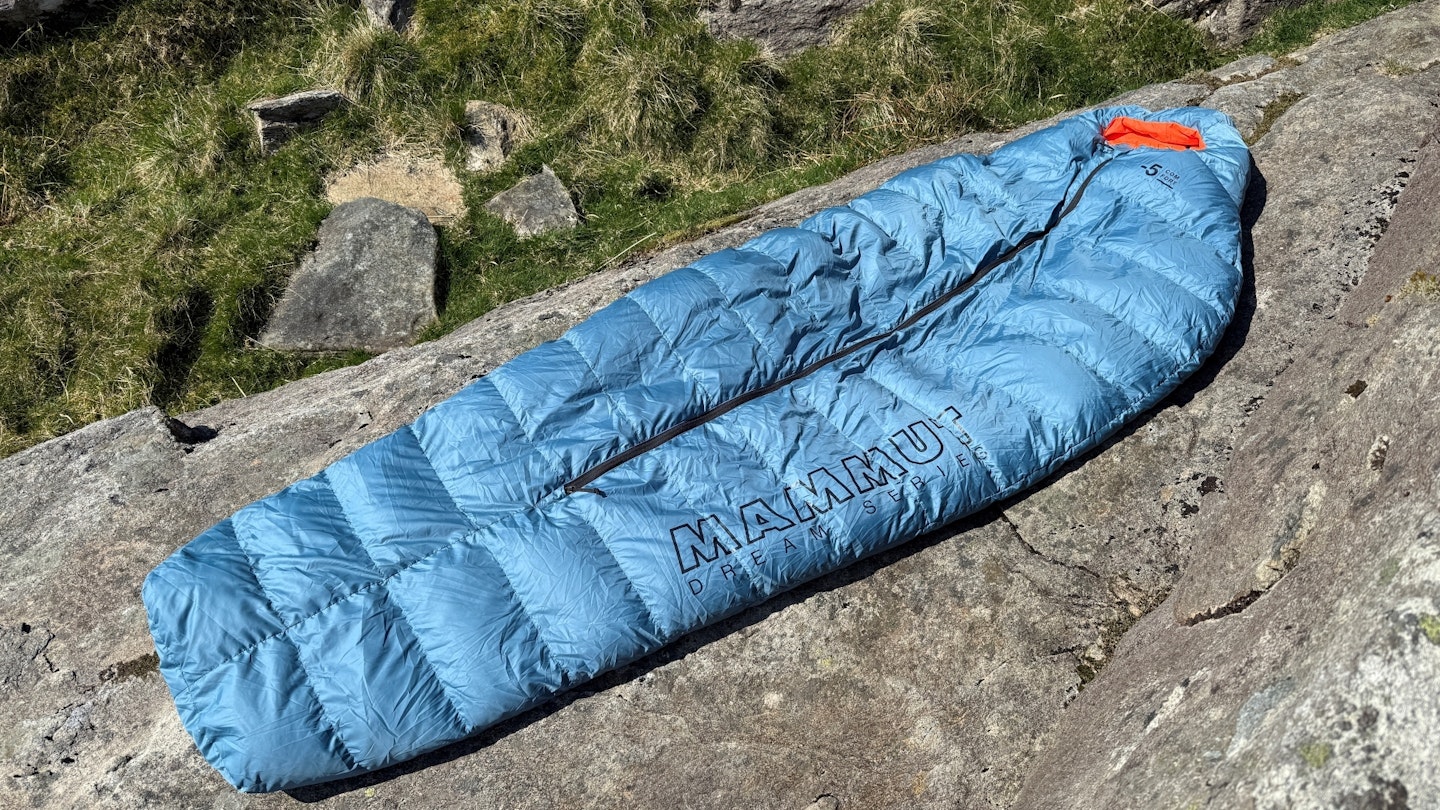
Lower fill power down means a higher fill weight is required to deliver a given level of overall warmth. And inevitably the more down you use, even if you use lightweight shell and lining fabrics, the heavier and bulkier the sleeping bag will be.
Having said that, the Mammut Comfort Down -5 bag tips the scales at a pretty commendable 1.19kg, while the shorter -7 version is 1.13kg. That’s without including the compression stuff sack, which adds another 100g or so.
Compared to a synthetic bag of similar warmth, they’re considerably lighter and more packable. They also undercut a couple of big rivals in the 650FP down bag category when it comes to overall weight and bulk, such as the Therm-a-Rest Boost 650 -6 and the Nemo Disco 15 (though admittedly, both of those are marginally warmer than the Mammut).
Given the bag’s generous proportions and excellent comfort levels, however, we consider the Comfort Down -5/-7 to strike an excellent balance between weight, comfort, warmth and price.
It’s certainly a viable option for wild camping and all but the most ultralight backpackers. And it’s an excellent bag for more relaxed camping scenarios such as trekking or basecamp use, too.
Materials and sustainability
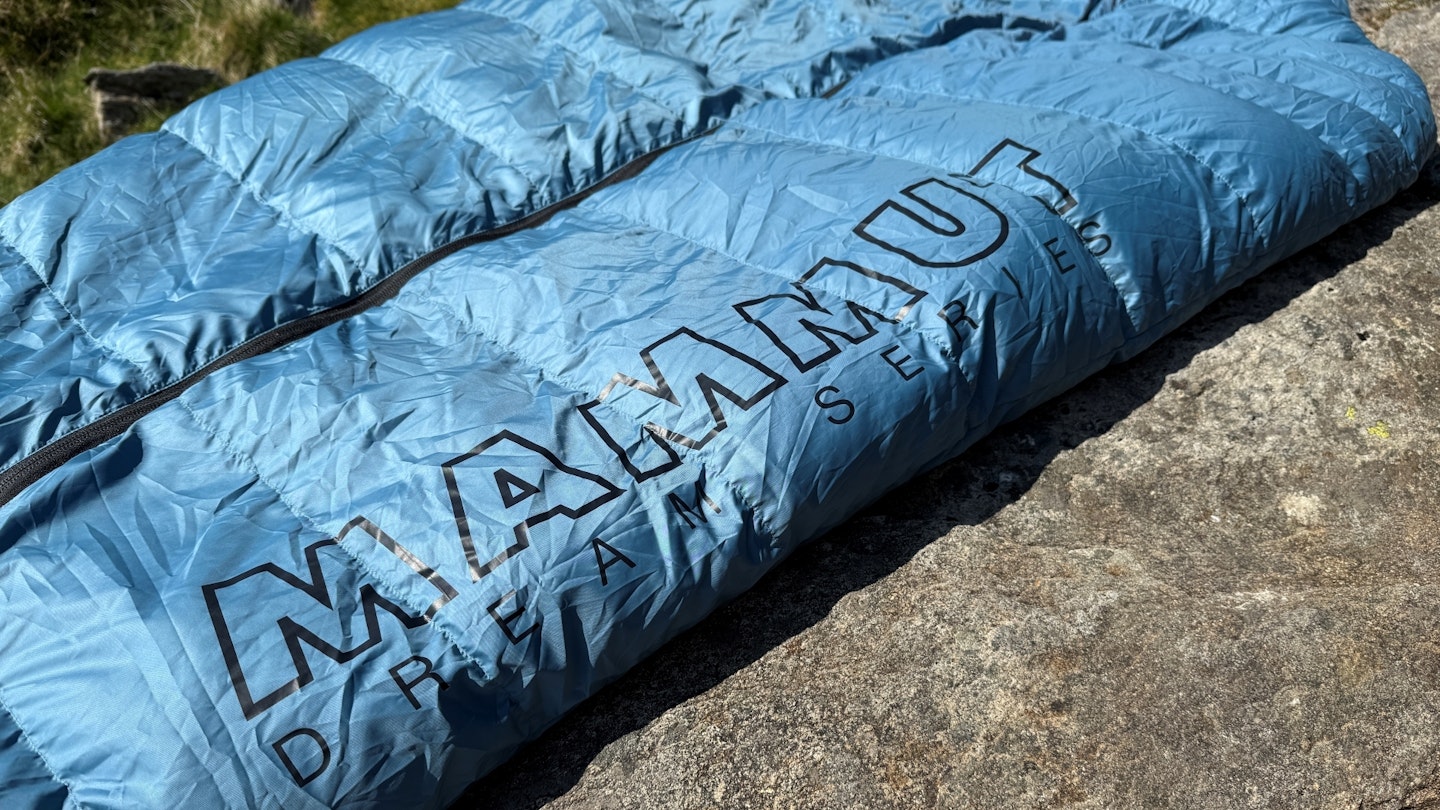
As well as that 100% recycled duck down fill, the shell and lining fabrics of this sleeping bag are made from bluesign-approved 100% recycled polyester. Together these give the sleeping bag a soft and comfy feel, and both have a PFC-free DWR.
The sleeping bag has also been manufactured with a more efficient cutting pattern that helps to conserve resources and reduce fabric waste by 15% compared to the industry average.
As sustainability initiatives go, the Mammut Comfort Down series just about the best environmental credentials on the market. Top marks all round.
Size and shape
As mentioned up top, this bag comes in two different lengths – a size L designed for users from 180-195cm (i.e. up to 6ft 4in) and a size M designed for users up to 180cm (5ft 11in). Both have a fairly relaxed mummy profile, although how it fits is very much dependent on your height and build.
If you’re at the smaller/shorter end of the spectrum, you might find that the generous dimensions leave a fair bit of dead space inside the bag. In contrast, at 193cm (6ft 4in), I was at the upper end of the sizing for the L, and during testing I therefore appreciated the snugger fit. In fact, I found it to be a very comfortable bag, ideal for my tall, slim-to-medium build.
Features

The bag offers plenty of adjustment around the head and neck, with dual internal drawcords on either side, which are easy to cinch in from inside the bag. There’s also a plastic press-stud to secure the neck baffle.
The well-padded hood and neck baffle do a good job of sealing in warmth too, though unlike the higher-spec Mammut Perform and Protect down bags, they lack the noise-deadening soft hood lining and funnel-style draught excluder around the hood. Nor do you get an inside pocket for storage.
However, the bag’s main USP is the chunky 3/4-length centre zip with a full-length internal baffle and a two-way zipper. The sliders can be operated from inside or outside the bag, with easy-to-grab cord pullers.
The top slider is also fitted with a very effective anti-snag device. Unlike a lot of bags, the main zip is also a reverse coil design, which helps with draught exclusion and moisture resistance.
Personally, I love a centre zip design. As a side sleeper, I find it a lot more practical, as it means I never end up sleeping on top of an uncomfortable side zipper. It also makes it easier to get in and out of the bag, regardless of how you’re positioned, especially in a smaller and more confined solo tent.

Then there are the ventilation benefits – and thanks to the two-way zipper on this bag, you can vent from either the top or bottom. On milder nights, you can even open it all the way out, leaving only the footbox enclosed.
Mammut has thoughtfully sewn a Velcro tab and fastener on the hood and underside of the bag too, which it calls ‘blanket mode’.
This means you can essentially use the bag as a backpacking-style quilt if desired. With the tab fastened, you can fold the hood back, so it doesn’t flop over your face in the night. It’s a nice touch that adds considerable versatility for warm weather use.
Verdict
The Mammut Comfort Down -5 is a great all-rounder that strikes a sensible balance between price, comfort, warmth, packed size and weight.
This bag’s excellent sustainability credentials will also appeal to eco-conscious consumers, though ultralighters will doubtless look for better warmth-to-weight than 650FP fill down can offer.
Looking for something with a better warmth-to-weight ratio? Check out our best lightweight sleeping bags for 2025.
Shop this product
About the author

Matt Jones is a freelance journalist based in the heart of Snowdonia National Park, he’s a vastly experienced gear tester and self-confessed outdoor kit geek. Matt’s been one of our main gear testers for the last couple of years and is the first person we call with any complicated kit queries that need in-depth and forensic analysis.



